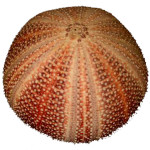Part four of four in a series about Greenpeace recent manned submersible expedition to two of the largest submarine canyons in the world, the Pribilof and Zhemchug Canyons in the Bering Sea off the west coast of Alaska.
 The following exclusive interview was conducted by Deep Sea news over email with Dr. David Guggenheim, submarine pilot and scientific advisor for the Bering Witness expedition. He is the founder of 1planet1ocean; and the OceanDoctor blog. In this interview, he answers 11 questions detailing his recent experiences as sub-pilot, scientist, and communicator.
The following exclusive interview was conducted by Deep Sea news over email with Dr. David Guggenheim, submarine pilot and scientific advisor for the Bering Witness expedition. He is the founder of 1planet1ocean; and the OceanDoctor blog. In this interview, he answers 11 questions detailing his recent experiences as sub-pilot, scientist, and communicator.
1. What kind of subs are you authorized to drive?
I’ve been trained as a pilot on two subs, both 1-person vehicles built by Nuytco, Ltd. in Vancouver, headed by Dr. Phil Nuytten.
On this expedition we used a pair of DeepWorker 2000 subs which have a maximum depth of 2,000 feet. The other, the DeepRover sub, is basically an acrylic sphere and will take you to 3,000 feet. It was featured in the film, “The Abyss.”
2. What was your overall role in the Bering Witness Expedition?
I played quite a few roles as is common and necessary on any expedition. My principal roles were as a scientific advisor and experienced sub pilot, bringing my experiences from similar expeditions in the Gulf of Mexico to the Bering Sea. I also served as data archivist, responsible for archiving, cataloging and documenting more than a terabyte of submarine/ROV/topside video, still digital images, and associated navigation and other data from the expedition. I also served as underwater videographer, but sadly we never did find the pinnacles in the Bering Sea that I was to video-document. Finally, through the 1planet1ocean site, I worked to try and evaluate new methods for sharing our experiences in near-real-time with the public through the web, including blogs and social networking sites.
3. What were some of your most important discoveries?
Bringing back the first underwater images of their kind from Pribilof and Zhemchug Canyons is monumental. Unlike looking at critters brought up from bottom samples, being able to video intact ecosystems as they exist is incredibly important to understanding how these ecosystems function, with all their moving parts. For example, seeing how important drop stones (rocks carried by glaciers, then dropped by icebergs into the Bering Sea) are to the ecosystem and all of the corals, sponges, fish, and anemones that form upon them is an important window into what is likely a fundamental building block of the deep Bering Sea ecosystem. We knew we’d probably see trawling damage, but being able to document the scale and impact was also very important. I didn’t realize I had landed squarely in a trawl scar and radioed to topside initially that I thought I was seeing some sort of geologic stratification rise above me — such was the scale of disturbance to the bottom. I dove on one of the most heavily trawled sites and found serious impacts upon corals there.

4. How will this information be used?
As we “speak” these data are being distributed to scientists around the world for analysis. We hope and expect that these data will support a number of peer-reviewed scientific papers. We also expect that these data will be useful in policymaking, in the Bering Sea and beyond. The North Pacific Fishery Management Council will obviously take great interest in this information which should help guide policies regarding trawling. There are many other areas around the U.S. and the world where deepwater corals exist but few data exist. I hope that these data can provide useful insights to guide policies in such areas. Finally, these data will continue to find their way to the public, especially the video and still imagery, through web sites, conferences, talks, and the media.
5. How did you go about becoming a submarine pilot? That’s unique skill. Is it something you’ve always wanted to do?
I owe it all to Sylvia Earle, Explorer-in-Residence at National Geographic. Eight years ago she invited me to participate in sub training in Key West as part of Sustainable Seas Expeditions (a joint effort of NOAA and National Geographic), and I was hooked. Later I participated in several expeditions with Sylvia in the Gulf of Mexico and I never ceased to be amazed at how these small subs have truly opened a new dimension to marine research today just as SCUBA did decades ago. This truly has been a boyhood dream come true — I actually played with submarines (1-person mini-subs), if you can believe it, that I made from Lego blocks as a kid. I pulled a plastic driver out of one of my toy race cars and put him in the sub. He never wanted to sit in that car again.
6. Are the submarines difficult to manage?
The subs are remarkably easy to fly, and I believe that’s one of Phil Nuytten’s greatest accomplishments with what I describe as the “next generation” of submarine technology. He’s put submarines in the hands of people like me, a scientist, along with teachers, journalists and others who have had little or minimal experience with submersibles. You fly the DeepWorker with your feet — the left pedal controls vertical movement, the right lateral movement. That leaves your hands free for the myriad of other activities during a dive, such as videography, using the manipulator arm for
collecting samples, monitoring life support, etc.
7. What kind of things do you have to know to become an effective (i.e. skilled) sub pilot?
The basics of sub operation, including controlling the sub in the water, are very straightforward. However, there are many emergency procedures that you must learn in order to deal with a wide range of situations, such as a fire in the cabin, loss of communications, etc. You need to be the consummate multi-tasker as you might be trying to capture critical video or collect an important specimen while controlling the manipulator arm, adjusting the position of the sub, delivering life support readings to the surface, and keeping track of the other sub. Some of the key skills are not unlike what you learn in SCUBA, such as communicating clearly, dealing with poor visibility or high currents, problem-solving under pressure, and staying calm when things don’t go right.
8. Have you had any scary moments, or emergency ascents?
I’ve had several dives cut short, but thankfully have never had to make an emergency ascent. I’ve returned to the surface after receiving a water alarm in one of the battery pods (turned out to be condensation). On my last dive in the Bering Sea I lost one of my vertical thrusters to a squid “attack” at 1,300 feet and had to return to the surface — that story is now “immortalized” in my blog, “Attack of the Giant Squid’s Cousins.”
Probably the most troubling moment where I cut a dive short was in Pulley Ridge on the West Florida Shelf at about 250 feet. The southward leg of the loop current was so powerful that I was being carried backwards along the bottom, even at full throttle. Not wanting to become entangled in something I couldn’t see coming from behind, I radioed topside that I was aborting the dive.
9. What is the goal and purpose of your new NGO 1planet1ocean?
To me the name “1planet1ocean” signifies the fact that the oceans no longer divide civilizations, but indeed unite us, and a united effort — involving strong international collaboration — is needed to develop solutions that restore and sustain the world’s oceans.
Although advocacy will always be a component of what 1planet1ocean does, I think there are many groups out there that already fill that niche well. Our goal is to engage in projects that advance specific solutions for problems facing our oceans, including the advancement of our knowledge. This includes expeditionary research to identify and map important marine ecosystems, especially coral ecosystems, in order to inform strong conservation policies. The Greenpeace-led expedition to the Bering Sea is a perfect example of this.
Another area of focus is sustainable aquaculture and the promotion of next-generation land-based recirculating aquaculture systems in order to reduce pressure on wild fish stocks and provide a sustainable alternative that supports local communities. I’ve been working as a consultant to Aquaculture Developments, LLC of Pittsburgh, Pennsylvania and have become convinced that these technologies represent one of the most important, yet unsung, solutions to overfishing yet.
Finally, I think there are vast numbers of people out there who love the oceans and want to engage somehow but haven’t yet been offered the right opportunity. I’ve seen how traditional approaches to NGO fundraising and communications tend to preach mostly to the choir, with only the occasional newsbyte reaching the person in the street. I heard a statistic once that the average member of an environmental NGO is a woman in her sixties. I feel strongly that we need to engage people in their youth to build a life-long interest and passion for science and conservation. Through 1planet1ocean I hope to innovate new ways to connect people to the oceans, such as using leading-edge Web technologies and social networking. From aboard ship we were able to include thousands of virtual participants in the expedition through the web and get a self-sustaining buzz going out there. Science really is cool and exciting, and I think it can really engage the public without the need to sensationalize or dumb it down. Contrary to conventional wisdom, I think people enjoy a good intellectual challenge and learning new things. The burden is on us as teachers to make it understandable, interesting and relevant.
10. I’ve read your OceanDoctor blog. You gave nice insights to the Expedition. How is that coming along?
I just might have found the perfect writing medium! I love to write and a blog is a more immediate and interactive form of communication than, say, magazine articles. I also think scientific writing, or any writing for that matter, is more interesting when personalized. I like to write that way and a blog is truly ideal for that. My daughter came up with the “OceanDoctor” moniker. I told that had her my parents wanted me to be a medical doctor and she said, “But you are a doctor. You’re a doctor for the oceans…an Ocean Doctor.” I loved that, and it stuck. So far the feedback has been very positive, so the OceanDoctor will keep writing!
11. Where do you go from here? What’s your next project?
I serve as a member of the Advisory Council for the Harte Research Institute (HRI), and I also serve as HRI’s Cuba Programs Manager and am co-Principal Investigator on a major project in partnership with the University of Havana’s Center for Marine Research to study Cuba’s Gulf of Mexico, the first-ever comprehensive study of the waters of Cuba’s northwestern coast. We’ve conducted several expeditions and plan for several more in the next two years. I’m unpacking my suitcases from Alaska and packing my bags for Cuba simultaneously as I’m planning to head down at the end of August for meetings and to check in on our joint sea turtle project at Cuba’s westernmost point. HRI is one of very few U.S. organizations licensed to conduct marine research in Cuba and I feel very lucky to be involved. We’ve already talked to our Cuban colleagues about bringing subs in to do deepwater analysis in that region, and I’d love to make that a reality sometime soon.





